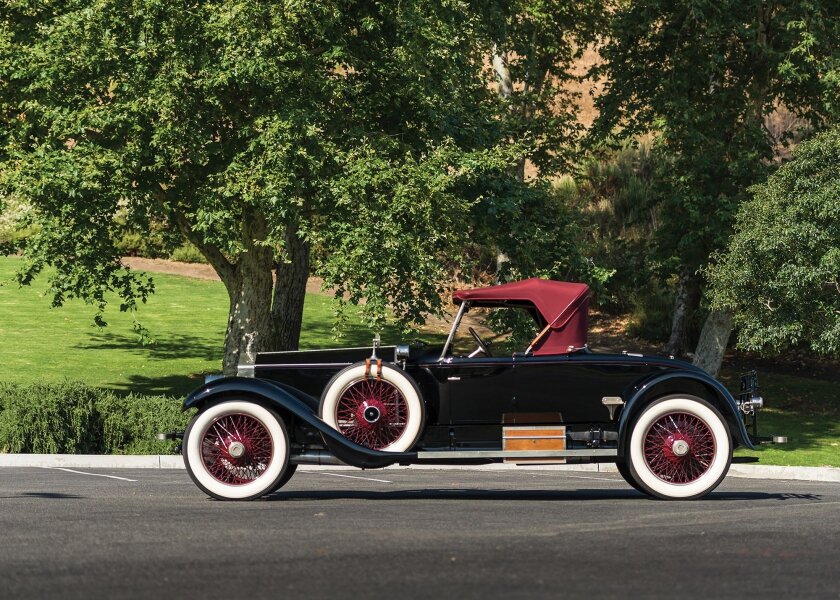1938 Brough SS80 Superior
with ‘Petrol Tube’ Sidecar

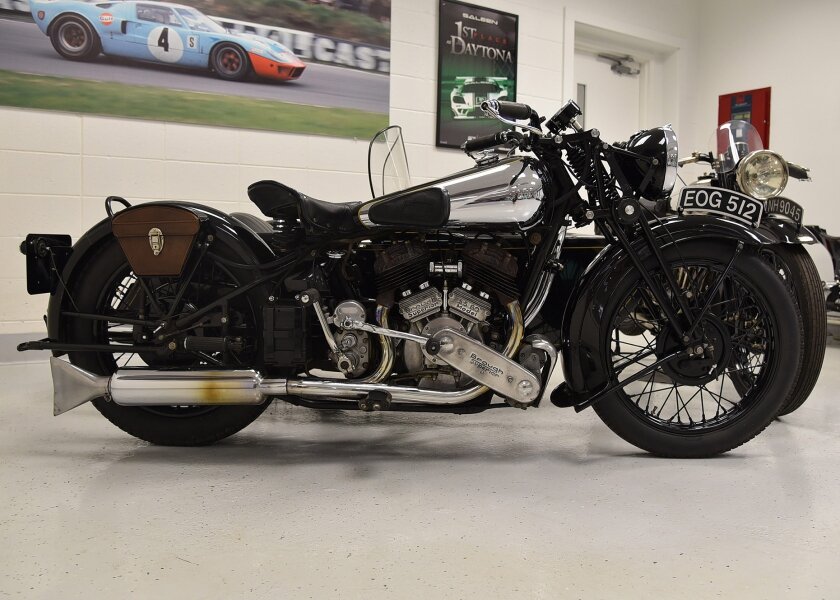
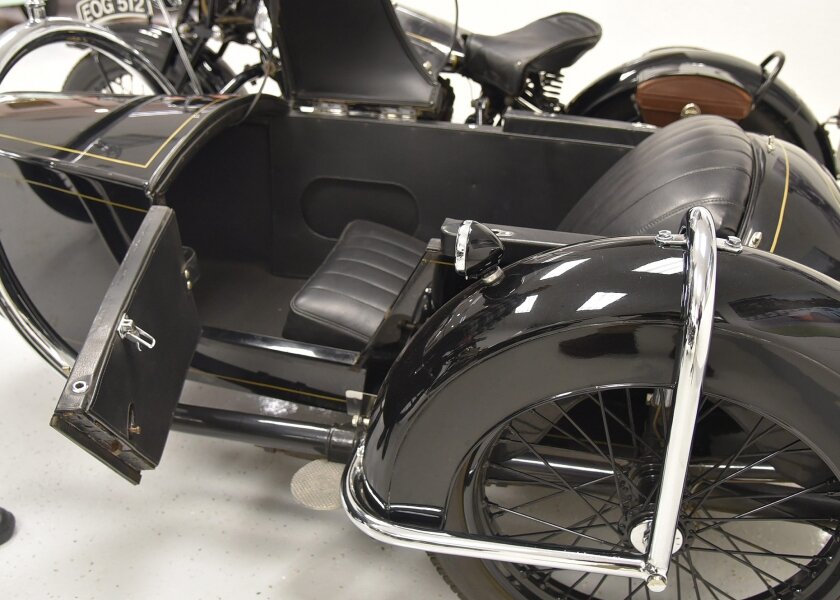
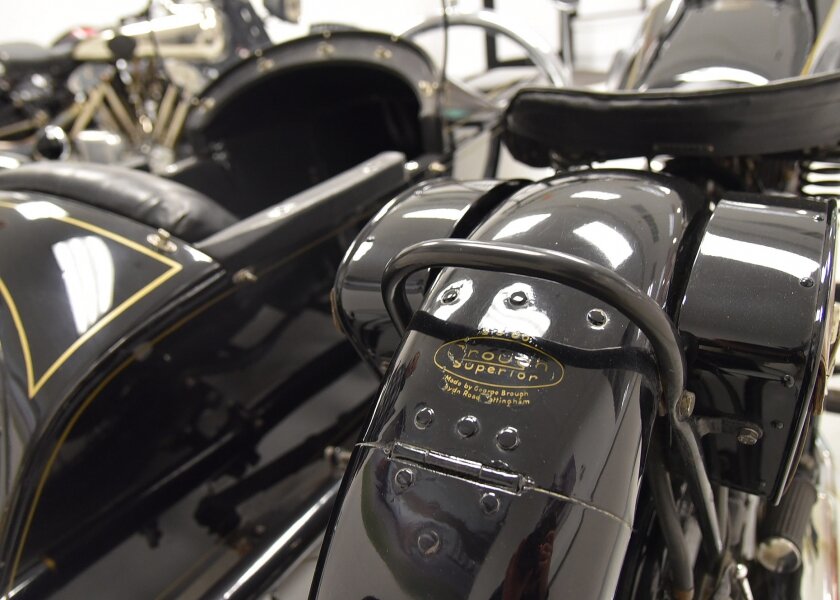
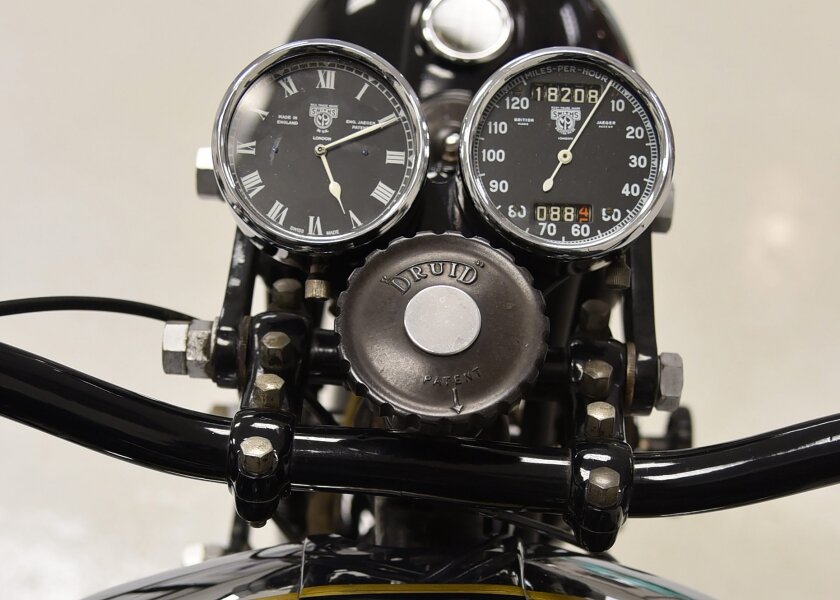
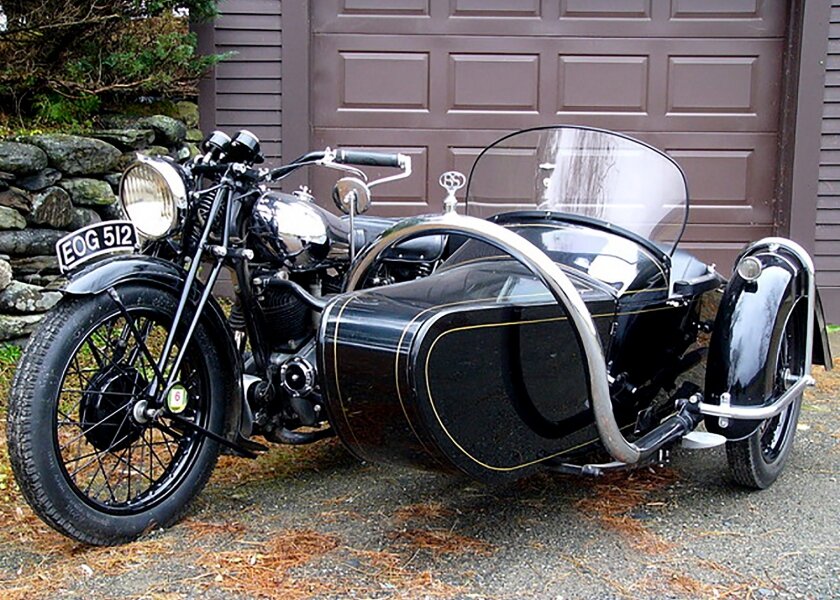
Specifications
Engine: 982cc Matchless V-Twin Engine
Horsepower: 45
Transmission: 3-Speed Hand-Shift Gearbox
Suspension: Castle Fork Front Suspension with Friction Damper and Rigid Rear Suspension
Brakes: Front and Rear Drum Brakes
The designation Brough Superior was coined by George Brough as a response to the machines his father made pre-WW1, which were merely known as ‘Broughs.’ That sense of superiority was sustained by the Nottingham company to the end of manufacture in 1939. Frequently referred to as the ‘Rolls-Royce of motorcycles,’ Brough began to advertise itself as such when the company gained explicit permission to use the term after a Rolls-Royce executive toured the Brough factory.
The SS80 model name dates from 1922, when a JAP-powered model was guaranteed to do the then phenomenal speed of 80mph, with the famous racing Brough ‘Old Bill’ amassing an impressive competition record. The SS80 re-appeared as part of what became the final range of Brough Superior machines in 1935, using the excellent AMC sidevalve V-twin, as fitted to the Matchless Model X, though with subtle differences in specification and a crankshaft to Brough’s preferred design. A total of 159 Brough Superiors were built in 1938, and of the 3048 total Superiors that left the Nottingham factory during the 20-year production run, 1086 were SS80 models.
Alongside his machines, Brough always offered a range of sidecars, an important market segment in the 1930s, which were made to specification by outside firms and the SS80 became the machine most often specified by sporting sidecar owners. The sidecars had coach-built bodies, and some carried a spare tire, while others offered two seats for occasional use. The fit and finish of these sidecars were of the highest standard, as were the motorcycles. These sidecars all offered good protection from the elements. Many of the earlier sidecars were built to Brough Superior specification, while later sidecar frames were manufactured in the Brough Superior factory. Later sidecars were unique in the fact that the frame of the sidecar held fuel. The sidecar frame looped over the top of the sidecar body and had a filler cap at the topmost position. Fuel was pressurized by a hand pump that transferred fuel from the sidecar to the petrol tank on the motorcycle. Two different bodies could be ordered for the petrol tube sidecar: cruiser or sports.











